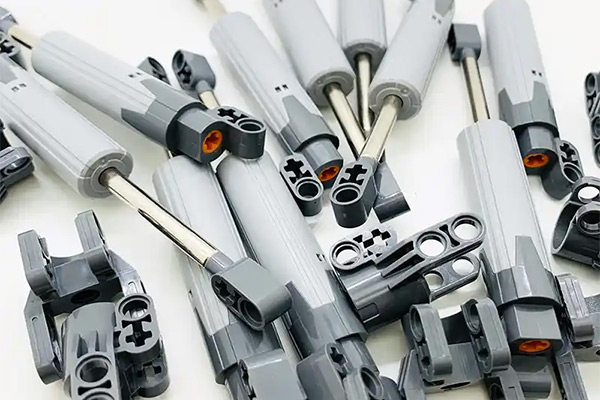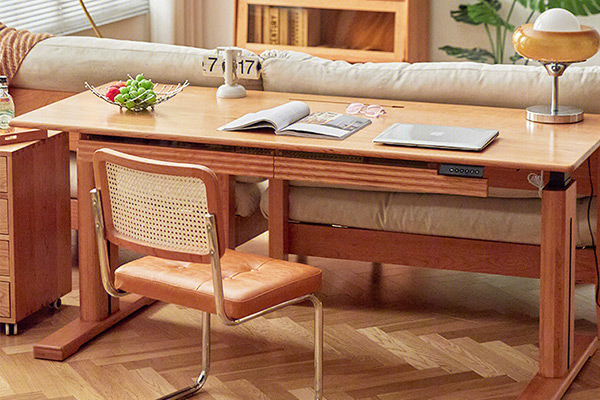The Analysis of Standing Desk Motor Technology: Performance Differences Between Single-Motor, Dual-Motor, and Multi-Stage Lift Systems
As health-conscious office setups become more popular, the Height Adjustable Office Desk has evolved from a niche product to a mainstream essential. At its core, the motor is the most critical component, determining the desk's performance, stability, and durability. The most common motor systems on the market are single-motor, dual-motor, and various multi-stage lift systems. What are the differences between them, and how should a consumer choose? This article will provide a detailed breakdown.
Single-Motor System: An Economical and Practical Entry-Level Choice
A single-motor Standing Desk typically has one motor installed in one leg, which uses a built-in transmission rod to raise and lower the other leg synchronously.
Performance Characteristics:
Lower cost: With only one motor, the manufacturing cost and price are relatively low, making it an excellent choice for budget-conscious users.
Simpler structure: It's easy to assemble and maintain.
Weaker weight capacity and stability: Since there's only one driving force, the desk can wobble or lift unevenly if the weight on the desktop is unbalanced. Its weight capacity is usually around 70-80 kg.
Average speed and noise: The lifting speed is often slower, and the operating noise can be more noticeable.
Best for: Users with a limited budget, a light desktop load (e.g., just a laptop and a few files), and no strict requirements for lifting frequency or speed.
Dual-Motor System: A Stable and Efficient Mainstream Option
A dual-motor Standing Desk has independent motors built into both legs, which work together via a synchronization controller to ensure the desktop lifts evenly.
Performance Characteristics:
Stronger weight capacity and higher stability: With two motors working in unison, the desk can easily handle heavier loads, often supporting 100-150 kg or more. It maintains a smooth lift even when desktop items are unevenly distributed.
Faster lifting speed: The collaborative effort of two motors typically doubles the lifting speed of a single-motor system, significantly improving the user experience.
Smoother and quieter operation: The dual-motor system's synergy reduces transmission loss and mechanical stress, resulting in a smoother and quieter lift.
Richer features: High-end dual-motor systems often include smart features like programmable height presets and anti-collision sensors, offering a more user-friendly experience.
Best for: Office workers and creators who need a high weight capacity, excellent stability, and fast lifting speed, and who have many items on their desk or frequently adjust their desk's height.
Multi-Stage Lift System: The Advanced Option for Performance and Aesthetics
Beyond the number of motors, the leg structure of a Height Adjustable Office Desk also directly impacts its performance. Standing desk legs are commonly available in two-stage and three-stage designs, referring to the number of telescopic tubes.
Two-Stage Lift System
Simple structure: The legs consist of two telescoping tubes, offering a limited lifting range.
Lower stability: When extended to the highest point, the desk can feel less stable due to the longer unsupported section.
Lower price: A common configuration for entry-level products.
Three-Stage Lift System
Wider height range: The legs are made of three telescoping tubes, providing a much larger height adjustment range to better accommodate users of different heights.
Better stability: When extended to the highest point, the three-stage structure's greater overlap between tubes significantly reduces wobble and improves stability.
Quieter operation: The multi-stage structure reduces mechanical friction during lifting, resulting in better noise control.
Higher price: The more complex structure leads to a higher cost.
In summary: When shopping, an excellent dual-motor three-stage Electric Height Adjustable Desk offers the best combination of performance, stability, and user experience. It provides a strong weight capacity, stable lifting, and a wide height adjustment range, meeting the needs of most users.
Conclusion: How to Make Your Choice
| Tech Type | Motors | Leg Stages | Weight Capacity | Lift Speed | Stability | Best For |
| Entry-Level | Single | Two | Average (<80kg) | Slow | Fair | Users with a tight budget and few items on their desk |
| Mainstream | Dual | Two/Three | Strong (>100kg) | Fast | Good | Most users looking for a balance of performance and value |
| Flagship | Dual | Three | Excellent (>120kg) | Fast | Exceptional | Users demanding peak performance and with heavy items on their desk |
When making a purchasing decision, consider your budget, desktop load, usage habits, and your needs for stability and speed. If you just want to try out standing while you work, a single-motor system is a good starting point. If you want a more robust, durable desk with a superior experience, a dual-motor, three-stage Standing Desk is a much wiser investment.
-

The Analysis of Standing Desk Motor Technology: Performance Differences Between Single-Motor, Dual-Motor, and Multi-Stage Lift Systems
-

The Analysis of Standing Desk Motor Technology: Performance Differences Between Single-Motor, Dual-Motor, and Multi-Stage Lift Systems
-

The Analysis of Standing Desk Motor Technology: Performance Differences Between Single-Motor, Dual-Motor, and Multi-Stage Lift Systems
-

The Analysis of Standing Desk Motor Technology: Performance Differences Between Single-Motor, Dual-Motor, and Multi-Stage Lift Systems

